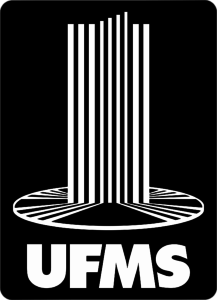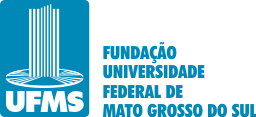Use este identificador para citar ou linkar para este item:
https://repositorio.ufms.br/handle/123456789/5823| Tipo: | Tese |
| Título: | CRESCIMENTO E USO DE ADITIVOS NA PRODUÇÃO DE PIRAPUTANGA (BRYCON HILARII) E DOURADO (SALMINUS BRASILIENSIS) |
| Autor(es): | FÚLVIA CRISTINA OLIVEIRA |
| Primeiro orientador: | Cristiane Fatima Meldau de Campos |
| Resumo: | Alguns aditivos podem melhorar a qualidade da água, estimulam o sistema imune e inibir o crescimento de patógenos, e têm sido utilizados como medida profilática nos sistemas de produção, com o intuito de melhorar a resistência dos animais frente a manejos estressantes como transporte e as infecções bacterianas. Dados sobre crescimento alométrico são cruciais para promover o desenvolvimento de protocolos de criação ideais e melhorar a eficiência de produção de juvenis de alta qualidade. Assim, esse estudo visa compreender o crescimento alométrico e o uso de aditivos na produção e transporte de peixes nativos. O artigo 1 identificou o padrão de crescimento de juvenis de piraputangas (Brycon hilarii) em hapas de 8 m3 na densidade de 20 peixes / hapa, durante sete meses. Características biométricas foram mensuradas a cada 30 dias. O fator de condição relativo indicou boas condições de crescimento das piraputangas com crescimento alométrico positivo, assim como todas as variáveis e correlações, exceto para peso x largura do corpo, comprimento padrão x comprimento da cabeça e comprimento padrão x altura do corpo. No artigo 2 foram avaliados os efeitos do óleo essencial (OE) de alfavaca-cravo (Ocimum gratissimum L.) (OG) na água de transporte de juvenis de piraputanga sobre o perfil hematológico, componentes residuais do OE OG no plasma, filé, fígado e na qualidade de água. O transporte (duas horas) foi realizado em embalagens plásticas com as concentrações de 10, 20 e 30 mg L-1 e um grupo controle, em triplicata. A sobrevivência durante e após o transporte foi de 100%. Os níveis de oxigênio permaneceram altos após o transporte e o pH diminuiu em todos os tratamentos. Após o transporte a hemoglobina, CHCM, HCM e glicose aumentaram nos peixes do grupo OE OG 30 mg L-1. O número de neutrófilos aumentou nos peixes transportados com OE OG 10 mg L-1. Com o crescente aumento das doses de OE OG houve aumento de linfócitos e de compostos no plasma, filé e fígado. Dose de 10 mg L-1 de OE OG no transporte de juvenis de Brycon hilarii, é recomendada para transporte de duas horas, pois garantiu a sobrevivências dos peixes, não afetou os parâmetros hematológicos e a concentração de resíduos foi baixa. O artigo 3 investigou o potencial da bactéria Lactobacillus rhamnosos como probiótico, paraprobiótico e sua combinação no desempenho produtivo, estado de saúde e na resistência do dourado (Salminus brasiliensis) infectado com Aeromonas hydroplhila. Os peixes (6,78 ± 1,65 g e 8,97 ± 0,42 cm) distribuídos em 16 tanques (300 litros), na densidade de 15 peixes/tanque receberam os tratamentos: dieta sem aditivo (dieta controle), probiótico (L. rhamnosus 108 UFC), paraprobiótico (L. rhamnosus 1010 UFC) e L. rhamnosus (viáveis probiótico L. rhamnosus 108 UFC + inativos paraprobiótico L. rhamnosus 1010 UFC), durante 45 dias. Posteriormente, os peixes foram desafiados intraperitonealmente com a bactéria A. hydrophila (0,82 x 106 UFC). Nas análises hematológicas os valores de hemoglobina, hematócrito e número de eritrócitos reduziram após a infecção. Houve aumento significativo na atividade dos leucócitos, após a infecção, independente do tratamento. As dietas suplementadas com L. rhamnosus (viáveis + inativos) e paraprobiótico proporcionaram maior altura total dos vilos e altura dos vilos comparadas aos peixes que receberam a dieta controle. O número de células caliciformes foi maior nos peixes que receberam as dietas contendo L. rhamnosus (viáveis e inativos) e probiótico. A área do citoplasma dos hepatócitos dos peixes que receberam a dieta paraprobiótico foi maior. As dietas com paraprobiótico (L. rhamnosus) e L. rhamnosus (viáveis + inativos) apresentaram potencial para melhorar a altura das vilosidades intestinais. |
| Abstract: | Additives that improve water quality, stimulate the immune system, and inhibit the growth of pathogens have been used as prophylactic measures in cultivation systems, to improve the animal's resistance to stressful management such as transport and bacterial infection. Thus, this study aims to understand the allometric growth and the use of additives in the production and transport of native fish. Article 1 identified the growth pattern of juvenile piraputangas (Brycon hilarii) in hapas of 8 m3 at a density of 20 fish/hapa, for 7 months. Biometric characteristics were measured every 30 days. The relative condition factor indicated good growth conditions for piraputangas with positive allometric growth, as well as all variables and correlations, except for weight x body width, standard length x head length, and standard length x body height. In article 2, the effects of the essential oil (EO) of basil clove (Ocimum gratissimum L.) (OG) in the transport water of piraputanga juveniles on the hematological profile, residual components of OE OG in plasma, fillet, liver, and quality of water. Transport (two hours) was in plastic packaging with doses of 10, 20, and 30 mg L-1 and a control group, in triplicate. Survival during and after transport was 100%. Oxygen levels remained high after transport and pH decreased in all treatments. After transport, hemoglobin, CHCM, HCM, and glucose increased in fish from the OE OG 30 mg L-1 group. The number of neutrophils increased in fish transported with EO OG 10 mg L-1. With increasing doses of OE OG, there was an increase in lymphocytes and compounds in plasma, fillet, and liver. A dose of 10 mg L-1 of OE OG in the transport of juveniles of Brycon hilarii is recommended for a two hours transport as it ensured fish survival, did not affect hematological parameters and the residue concentration was low. Article 3 investigated the potential of the bacterium Lactobacillus rhamnosos as a probiotic, paraprobiotic and their combination on growth performance, health status, and resistance of dourado (Salminus brasiliensis) infected with Aeromonas hydroplhila. The fish (6.78 ± 1.65 g and 8.97 ± 0.42 cm) distributed in 16 tanks (300 liters), at the density of 15 fish/tank received the treatments: diet without additive (control diet), probiotic (L rhamnosus 108 CFU), paraprobiotic (L. rhamnosus 1010 CFU) and synbiotic (probiotic L. rhamnosus 108 CFU + paraprobiotic L. rhamnosus 1010 CFU), for 45 days. Subsequently, the fish were challenged intraperitoneally with the bacterium A. hydrophila (0.82 x 106 CFU). The diets with paraprobiotic and synbiotic improved the condition factor of the fish about the control and the diet containing probiotic. In the hematological analysis the values of hemoglobin, hematocrit, and number of erythrocytes were reduced after the infection. There was a significant increase in leukocyte activity after infection, regardless of treatment. Diets supplemented with symbiotic and paraprobiotic provided greater total villi height and villi height compared to fish that received the control diet. The number of goblet cells was higher in fish that received diets containing symbiotic and probiotic and the diet. The cytoplasm area of hepatocytes from fish that received the paraprobiotic diet was higher. The diets with paraprobiotic (L. rhamnosus) and symbiotic (L. rhamnosus viable + inactive) showed potential height of the intestinal villi .The diets with paraprobiotic (L. rhamnosus) and synbiotic (L. rhamnosus viable + inactive) showed potential to improve the relationship between weight and length. |
| Palavras-chave: | USO DE ADITIVOS PIRAPUTANGA (BRYCON HILARII) DOURADO (SALMINUS BRASILIENSIS). |
| País: | Brasil |
| Editor: | Fundação Universidade Federal de Mato Grosso do Sul |
| Sigla da Instituição: | UFMS |
| Tipo de acesso: | Acesso Aberto |
| URI: | https://repositorio.ufms.br/handle/123456789/5823 |
| Data do documento: | 2022 |
| Aparece nas coleções: | Programa de Pós-graduação em Ciência Animal |
Arquivos associados a este item:
| Arquivo | Tamanho | Formato | |
|---|---|---|---|
| Tese Fulvia_Oliveira. Crescimento alométrico e o uso de aditivos na produção de peixes nativos.pdf | 1,12 MB | Adobe PDF | Visualizar/Abrir |
Os itens no repositório estão protegidos por copyright, com todos os direitos reservados, salvo quando é indicado o contrário.

